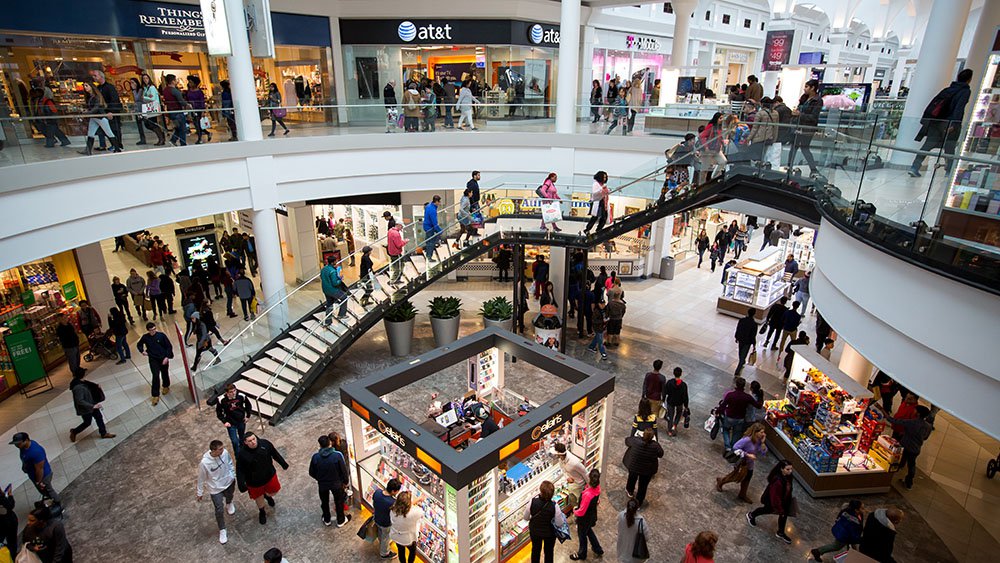‘Outlook is grim for the sector’
At the beginning of each semester, Mark Cohen, a professor at Columbia Business School, asks his about 200 students if they shop at department stores.
“Very few raise their hands,” said Cohen, a 32-year retail industry veteran and a former executive at retailers from former parent of Macy’s to Sears. “They look at me as if I’m nuts.”
But it’s a different story when it comes to his question about their favorite store.
“I’ve had students this past year talking about their favorite store being TJ Maxx or Marshalls or Nordstrom Rack or Amazon as opposed to Bloomingdale’s, Macy’s or Nordstrom,” Cohen, who is also the school’s Director of Retail Studies, said in an interview. “The outlook is grim for the sector.”
The story from Cohen about the exchange he’s had with his students, who are in the coveted millennial age range, is a telling sign of the deep troubles facing the department store sector.
Macy’s early Thursday reported worse-than-expected fiscal first-quarter profit and sales drop. Comparable store sales fell 5.2%, the ninth straight quarter of decline. While results at rivals Kohl’s Corp. and Dillard’s came out better than expected and showed some improvement (partly thanks only to cost-cutting efforts), sales results also remained in the negative column: Comparable sales at Kohl’s fell 2.7% and at Dillard’s, they dropped 4%.
Nordstrom on late Thursday reported a comparable sales drop of 2.8% at its namesake full-priced chain, compared to a 2.3% increase at its off-price discount Nordstrom Rack unit. JC Penney, reporting Friday, is expected to report a comparable sales decline of 0.8%, according to Retail Metrics. Analysts expect Sears Holdings, parent of both Sears department stores and Kmart, will report a 12% slide in comparable sales.
In all, the department store group is expected to see a comparable sales drop of 4.5%, one of the worst-performing retail segments, and lose money as a group, according to Retail Metrics. Five of the nine department store companies it tracks — Penney, Sears as well as Saks and Lord & Taylor parent Hudson’s Bay Co. — are all expected to be in the red.
DEPARTMENT STORES FACE STRUCTURAL CHANGES THAT SIMPLY DO NOT BODE WELL FOR THEM.
“I wouldn’t say there’s a lot of hope for the department stores in their current form and number of stores they have,” said Retail Metrics President Ken Perkins. “They are facing structural changes that simply do not bode well for them.”
Those structural changes are not only consumers’ increased shift to shopping online at retailers led by Amazon, which a Morgan Stanley study recently indicated is the No. 2 U.S. apparel seller when it comes to gross merchandise value. The changes are also not just about millennial-led consumer spending shifts.
Despite the struggles in the department store and apparel sectors, consumers are still buying discretionary items, but just at fast fashion retailers or off-price retailers including TJ Maxx and Marshalls parent TJX Cos., Burlington Coat Factory’s Burlington Stores and Ross Stores. In fact, all three retailers are expected to post sales gain in contrast to declines at department stores and both adult and teen apparel retailers, Retail Metrics data showed.
Department stores “are trapped in the old paradigm that stopped working for a long time,” Cohen said in the phone interview. Department stores “have failed at providing differentiated assortment. They’ve never embraced the phenomenon called fast fashion. They flooded the calendar with successive one-day sales. They lost their integrity with regard to pricing and lost the urgency (for consumers to buy).”
Department stores are doing a variety of things to respond. Macy’s is making more of its beauty and shoe departments in open, self-service format, taking a page from the likes of better-performing Sephora and TJX. It also plans to open more of its Backstage off-price concept within its existing stores, seeking to tap into the off-price discount demand that its rivals from Nordstrom to Saks and its own upscale Bloomingdale’s chains also are trying to capitalize on. However, industry watchers said while off-price concept works for retailers like TJX, department stores are only taking traffic and business away from their full priced stores.
A case in point: When Cohen asked his students if they shop at Nordstrom Rack, many raised their hands, but again, only very few raised their hands for full-priced Nordstrom.
That’s why Macy’s idea to have the off-price unit located right inside its full-priced stores has raised concerns among some analysts. While Macy’s said its store including the Backstage concept is performing better than those without, Neil Saunders, managing director of GlobalData Retail, said the strategy will “ultimately fall short.”
“We see evidence that such a move pulls customers away from the full price offering at stores and ends up cannibalizing sales,” he said. “It also sends confusing messages to the customer about the Macy’s brand.”
While there’s not one magical formula to rescue the sector from its troubles, one thing many in the industry agree on is that the store closings announced by Macy’s, Sears, Penney and others are not enough. As many as 2,000 stores combined may still need to be closed, Cowen & Co. said in a study released in April, adding Macy’s and Penney may need to accelerate their store-closing targets.
“Department stores are in a tough spot and, despite the initiatives in place to reinvigorate the top-line, significant hurdles remain,” said Jefferies LLC analyst Randal Konik.
by Andria Cheng

